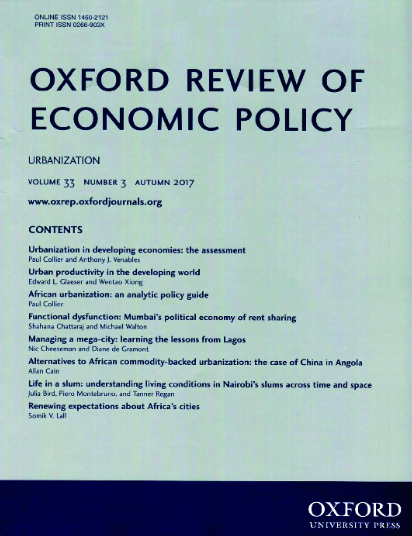英国脱欧和劳动力市场不平等:潜在的空间和职业影响
IF 1.8
2区 经济学
Q2 ECONOMICS
引用次数: 0
摘要
在本文中,我们研究了与英国脱欧后英国与欧盟关系的新贸易与合作协议相关的新贸易壁垒可能产生的分配影响。我们使用了一个劳动力需求模型,该模型结合了各行业的投入产出联系,允许企业和消费者进行需求替代,并允许各行业的工人重新分配。我们发现,在整个收入分配中,工人的风险敞口正在适度增加。男性的风险敞口大于女性,因为他们更有可能在受新贸易壁垒打击相对更严重的制造业工作。纵观各个领域,我们发现,面临新的脱欧贸易壁垒与当地贫困措施和最近新冠肺炎疫情的影响无关。本文章由计算机程序翻译,如有差异,请以英文原文为准。
Brexit and labour market inequalities: potential spatial and occupational impacts
In this paper we examine the possible distributional impacts of new trade barriers associated with the new Trade and Cooperation Agreement governing relations between the UK and EU after Brexit. We use a model of labour demand that incorporates input-output links across industries, and that allows for demand substitution by firms and consumers and worker reallocation across industries. We find that workers' exposure is moderately increasing across the earnings distribution. Exposure is greater for men than for women as they are more likely to work in manufacturing industries that are relatively harder hit by new trade barriers. Looking across areas, we find that exposure to new Brexit trade barriers is uncorrelated with measures of local deprivation and the impacts of the recent Covid-19 pandemic.
求助全文
通过发布文献求助,成功后即可免费获取论文全文。
去求助
来源期刊

Oxford Review of Economic Policy
ECONOMICS-
CiteScore
12.50
自引率
1.50%
发文量
41
期刊介绍:
The Oxford Review of Economic Policy is a refereed journal which is published quarterly. Each issue concentrates on a current theme in economic policy, with a balance between macro- and microeconomics, and comprises an assessment and a number of articles. It gives a valuable appraisal of economic policies worldwide. While the analysis is challenging and at the forefront of current thinking, articles are presented in non-technical language to make them readily accessible to all readers. The Oxford Review is aimed at a wide audience including government, business and policy-makers, as well as academics and students. It is required reading for those who need to know where research is leading.
 求助内容:
求助内容: 应助结果提醒方式:
应助结果提醒方式:


